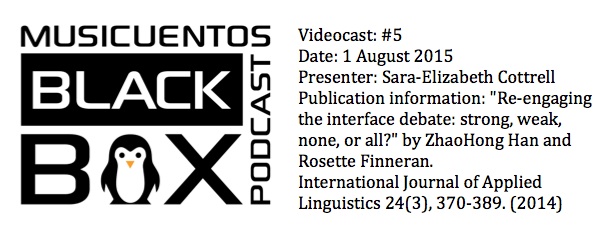Can language that’s learned be used in spontaneous communication? Yes. No. Maybe. It’s a big debate in the field of Second Language Acquisition research, and the authors of this article want to encourage all sides to take a more nuanced view of the issue.
This question is really complex (when I was unpacking the article I felt like I was re-reading every paragraph five times) but so important for us as teachers. If we’re teaching explicit language in class, is that okay? Is it useful for students? If we’re teaching implicitly, is that better? What do those terms even mean? Here’s an intriguing related question: Are we handicapping our students by pushing presentational mode? Watch this videocast to get a feel for how this debate is playing out in the research, and where we should go from here.
I do apologize for how fast this particular episode moves. My consolation for you is that you can always replay… and replay.
The Musicuentos Black Box is a collection of media resources designed to bridge the gap between Second Language Acquisition research and teachers in the classroom. The project is co-sponsored by Musicuentos and Indwelling Language. For more information or to find out how you can keep this resource freely available to teachers, visit the Musicuentos Black Box page.
4 Comments
Comments are closed.





[…] what if it was learned? And is still useful for communication? If I can use the language, who cares whether it was learned […]
[…] The Black Box videocast on re-engaging the Interface Debate […]
[…] My sources for these are Bill VanPatten’s spring Tea with BVP episodes, Rod Ellis’s article, Gianfranco Conti’s blog post, and Michael Long’s article (watch the Black Box video!). Note that these are mostly specific to instructed language learning, and that is an important perspective to keep in mind. There’s immersive, naturalistic language acquisition, and then there’s what happens in a classroom, and the two are not the same. […]
[…] can we know if the learning is implicit […]